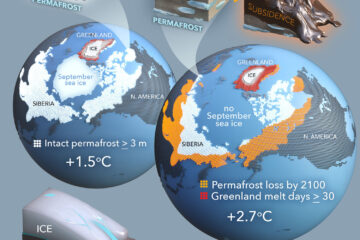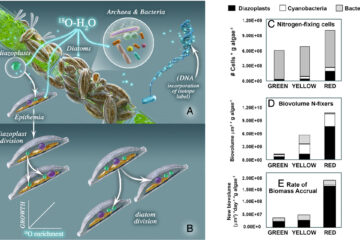Biomass offsets little or none of permafrost carbon release from soils, streams, and wildfire: an expert assessment
As the permafrost region warms, its large organic carbon pool will be increasingly vulnerable to decomposition, combustion, and hydrologic export. Models predict that some portion of this release will be offset by increased production of Arctic and boreal biomass; however, the lack of robust estimates of net carbon balance increases the risk of further overshooting international emissions targets. Precise empirical or model-based assessments of the critical factors driving carbon balance are unlikely in the near future, so to address this gap, we present estimates from 98 permafrost-region experts of the response of biomass, wildfire, and hydrologic carbon flux to climate change. Results suggest that contrary to model projections, total permafrost-region biomass could decrease due to water stress and disturbance, factors that are not adequately incorporated in current models. Assessments indicate that end-of-the-century organic carbon release from Arctic rivers and collapsing coastlines could increase by 75% while carbon loss via burning could increase four-fold. Experts identified water balance, shifts in vegetation community, and permafrost degradation as the key sources of uncertainty in predicting future system response. In combination with previous findings, results suggest the permafrost region will become a carbon source to the atmosphere by 2100 regardless of warming scenario but that 65%–85% of permafrost carbon release can still be avoided if human emissions are actively reduced.


